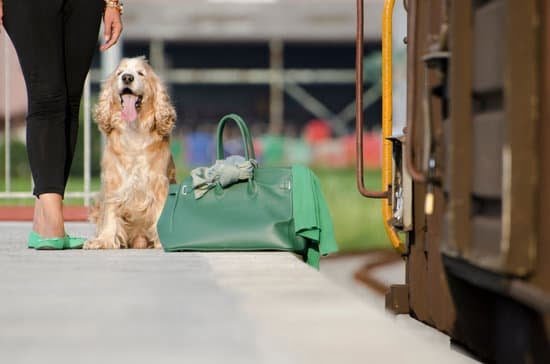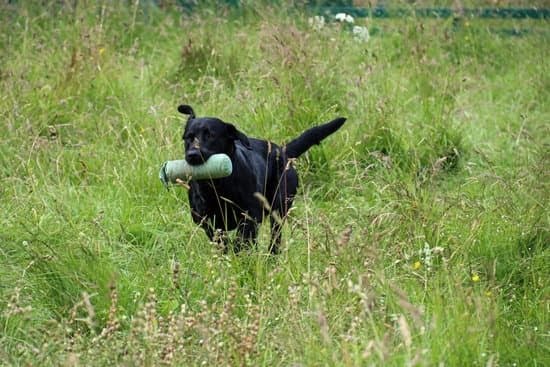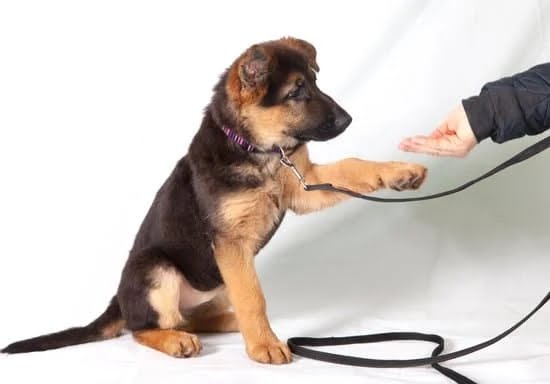Introduction
Training your dog to obey your commands can be an incredibly rewarding experience for both you and your pet. Before starting any type of training, it is important to understand the basics of canine behavior. Dogs need structure, consistency and most importantly, patience. If a task or command is too difficult or if the wrong methods are used, the dog may become frustrated and disinterested in training. Instead, success is achieved when tasks are broken down into smaller steps that are then practiced until mastered. Understanding how animals learn can also help make training easier and more effective. Traditional animal learning theories suggest using negative reinforcement to reduce undesired behaviors and positive reinforcement to increase desired behaviors. Negative reinforcement typically includes withholding treats or attention when a behavior happens while positive reinforcement involves providing treats and praise when behaviors occur that you want your dog to continue doing. Finally, repetition and consistency are key components in teaching commands because dogs may not learn complex behaviors on the first attempt; therefore, repetition will be needed for them to remember commands or actions. With patience and understanding of canine behavior, you can create a successful training experience for yourself and your pup!
Building a Good Foundation
Training a dog to listen to your commands isn’t as difficult as it may seem. The most important part of the process is laying a good foundation with clear expectations and instructions. To do this, you must use proper tools and equipment, learn an effective command vocabulary, and understand basic positional language.
Tools and Equipment: First and foremost, make sure that you have the right tools for the job. A collar or head halter should be fitted according to the breed’s size and strength. If needed, consider a gentle leader; these are designed to give handlers better control when training larger dogs. Additionally, invest in some tasty treats; dogs are more motivated to follow commands when there is something they would love in return!
Command Vocabulary: Having a consistent set of words that you use every time will help your puppy quickly understand what each word means. Common commands include sit, stay, come, heel, down, no or ok. It’s beneficial for both you and your pup if you stick with one word per command such as “sit” instead of “skooch down” or “down puppy”; this will eliminate confusion for them (and potentially repetitive frustration for you).
Positional Language: Giving directions like “left” or “right” can prove tricky since many dogs get confused about which direction those words indicate in relation to their physical position compared to yours. For example if they’re on your left side but when you say left they go right! Help them out by always pairing directional phrases with a gesture so they won’t become disoriented as easily while training.
Establishing Clear Expectations and Consistent Commands
It is important to ensure that you set clear boundaries for your dog and make sure that you are always consistent in delivering commands. Establish a language for yourself – stick to concise words, rather than sentences – and use hand signals as well as verbal cues, to ensure your dog understands what you want from them more quickly. It is also essential that everyone in the house uses the same commands – this ensures the dog doesn’t become confused and learns quicker which command corresponds with its desired behaviour.
Positive Reinforcement: Rewards and Praise
You should reward your dog every time it listens to your command. Positive reinforcement is instrumental in teaching a dog what is expected of them when responding to particular commands. Do not get frustrated or angry if they do not listen; remember that dogs learn through positive reinforcement so use treats, praises or maybe even playtime as rewards when they follow a command correctly. It may take several repetitions before they fully grasp what they are supposed to do, don’t give up!
Training Your Dog Step-By-Step
Step 1: Establish and maintain a clear, consistent set of boundaries and rules.
It is important to establish clear boundaries with your dog so that they know what is acceptable behavior and what is not when you are in public or at home. Set rules such as no jumping, no barking without permission, no escaping the yard, and no going in certain places (such as on furniture). Make sure to be consistent in expectations and consequences when they break a rule.
Step 2: Use effective forms of communication-including commands, calming signals, and treats-to build positive reinforcement.
Commands are spoken instructions used to train dogs to sit, stay, come, etc. To start teaching your dog common commands like these use a calm but assertive voice and combine verbal commands with signals for better comprehension. This can include hand signals or physical cues like pointing toward where you want them to go. Providing treats for good behavior during training sessions will help further reinforce the commands you’ve given them. Finally, calming signals such as turning away from stimuli or engaging in front end behaviour (such as lying down or taking a step back) can help relieve stress during training or whenever your dog becomes overwhelmed in situations outside of their control or comfort zone.
Step 3: Use corrective measures for unwanted behaviours instead of punitive methods such as yelling or hitting.
When it comes to disciplining dogs misbehaving it is best to implement corrective measures rather than punishment such as yelling or physical contact (which can lead to aggression). One way to correct unwanted behaviours is by teaching the dog an alternate command – this means training them how best respond if you see them about to do something unacceptable (for example barking ceaselessly). If an alternate command doesn’t have any affect then distracting the pooch with a toy should be used if possible so that they aren’t repeating the unwanted behaviour regularly due its rewarding results for the pup in question
Positive Reinforcement Techniques & Practical Training Tips
Training a dog to listen to commands is an important part of developing a strong bond between them and their owner. To make training successful, positive reinforcement techniques need to be employed that make the process rewarding and fun for both the owner and the dog.
Positive reinforcement involves giving rewards when your pup responds correctly to a command. This could include verbal praise such as “good job” or a pat on the head, treats, or even playing your puppy’s favorite game. Making sure you reward each successful response will ensure that your pooch wants to work for you. In order for positive reinforcement to work effectively, it needs to be given immediately after your pet does something correct, so consistency is key for this technique.
In addition to positive reinforcement, practical training tips can help in teaching your pup new commands and behaviors. Many times, basic commands will become easy after just a few repetitions, but more difficult behaviors have layers of subtleties which may take more time to master. You should begin by breaking down complicated tasks into smaller parts which are then rewarded separately until they add up into one complex task. It also helps to keep training sessions short and fun as monotony can cause boredom in dogs quickly. Lastly, practice makes perfect! A consistent approach with patience will lead to long-term success in teaching your dog how to respond accurately when commanded.
Practical Scenarios
Training your dog to listen to your commands is an integral part of developing a strong and trusting relationship. Having a friendly, obedient pet can be hugely rewarding; however, it can also be hard work and require commitment, patience, and plenty of repetition. Depending on the breed and ability of the animal, teaching a range of simple commands from ‘sit’ to ‘stay’ may take days or even months. However, successful training depends on establishing a few simple rules in practical scenarios.
The most basic and essential step for teaching your dog is to use positive reinforcement when they obey or demonstrate good behaviour. Once you have identified what motivates the animal – whether this’s treats, toys, or affection – use them as rewards whilst training. Keep in mind that all dogs are different and learn at varying speed so you should avoid any physical responses such as dragging them into position or raising your voice as this can be counter-productive when trying to establish trust between the two of you.
One common situation that owners face when training is when their dog begins barking at other animals or people; initially it may seem harmless but if it continues this can become extremely disruptive for everyone involved. To tackle this behaviour address the root cause by distracting the dog with commands like ‘sit’ which will demand their focus away from whatever was triggering them in the first place. Additionally, reward positive behaviour with encouragement or treats whilst gradually increasing their threshold for distraction tolerance in order to succeed over time.
In regards to challenging scenarios where multiple distractions might present themselves at once; try breaking down each command objectively until they master each element separately and then coalesce them all together once they’ve demonstrated mastery over each task independently. The key here is small steps that build upon one another until all behaviours are combined successfully; in practical terms this can mean lowering both physical and visual obstacles until each individual element is well understood by your dog before reintroducing these stimuli incrementally while they execute each action consistently. By starting small you not only make it easier for the animal but also build up complex behaviours gradually which increases the likelihood of success overall.
Troubleshooting Stragglers & Difficult Situations
Training a dog to follow commands can be challenging, especially when the dog is fearful or anxious. If your pup responds negatively to commands and/or shows signs of fear and anxiety (e.g., heavy panting, shaking), it is important to take into consideration the causes of the negative behaviour. Fear and anxiety can be caused by various factors, from past traumatic experiences to feeling overwhelmed in new environments or with unfamiliar people or animals.
To address these issues, you should adjust your approach accordingly: first and foremost, implement positive reinforcement methods. Reinforce desired behaviors with treats and praise for successful responses rather than punishing mistakes; this will make your pup more likely to respond correctly when given a command in the future. Once you have established an element of trust between you and your dog, introduce basic commands such as “sit” and “stay” one at a time. Practice these small commands both with familiar people in familiar environments as well as unfamiliar people/places so that your pup becomes comfortable being obedient regardless of the context. Additionally, ensure that your training sessions are short but consistent; if either you or your pup start to become overly anxious or frustrated during a session, take a break before resuming with basic tasks once again. Providing meaningful protection is another way to earn trust–if possible try out calming pheromone sprays along with an interactive toy for distraction/relaxation training when needed; as previously mentioned rewarding bravery with tasty treats is always helpful too!
Knowing When to Stop and End the Training Session
The most important part of training your dog is knowing when to stop and to end the session. After working hard with your pup it is essential to give them breaks in between training sessions so that their minds can cool down and reset. Debriefing and cool down sessions are an ideal way to properly end a training session, as not only do they allow them time to digest what they have learned but they also provide you with feedback on what you need to improve on during subsequent sessions. This helps ensure that your dog will be more willing and eager to learn new commands the next time you practice together. During a debrief session, ask yourself: did I give my dog enough praise? Did I make the commands more difficult as my pup improved? Did we break up our training with rewards? And by taking time out after each safe and successful practice session, both yourself and your furry friend can look forward to future successful lessons!
Final Thoughts
One of the most important things to remember as you are training your dog is that it’s not just about teaching the behaviors and commands, but also about forging a strong connection and bond with your pup. Throughout the training process, take great care to remain patient, gentle, and kind. Use treats as rewards only occasionally – instead opt for rewards like verbal praising or petting. Carrying out regular activities like playing catch or fetch can also give you plenty of chances to strengthen your relationship with your dog outside of formal training sessions. Additionally, try to find time for leisurely walks together so your pup can learn more about its environment. These exercises will help encompass both physical and mental stimulation for your dog whilst enhancing their obedience and focus during subsequent training sessions. As always, ensure that you end all training sessions once they have become excited or frustrated from reinforcement; this will prevent them from forming negative associations with their commands. Ultimately, with patience and consistency throughout their learning process your dog will be sure to respond positively and become a faithful listener!
Conclusion
Staying motivated to implement training commands with your dog is key to creating good habits. As a responsible pet owner, it’s important that you remain consistent in your expectations throughout the dog’s learning process. Use positive reinforcement as much as possible to keep your pup engaged and enthusiastic about their learning. Offer treats or other rewards when they are well behaved, and shower them with plenty of affection when they have achieved a new command. Giving commands in a calm and clear voice will help the dog understand what they should do and will help eliminate confusion – something that dogs can easily become overwhelmed by! Being patient during the process is also essential since sometimes it can take longer than expected for puppies or older dogs to master complex commands. When mistakes are inevitably made, always use more kindness than correction and repeat the desired behaviours until it becomes second nature for the pup to obey your orders without hesitation. With these tips, you’ll be able to train your pup successfully and ensure a long lasting bond between you both based on mutual respect!

Welcome to the blog! I am a professional dog trainer and have been working with dogs for many years. In this blog, I will be discussing various topics related to dog training, including tips, tricks, and advice. I hope you find this information helpful and informative. Thanks for reading!





